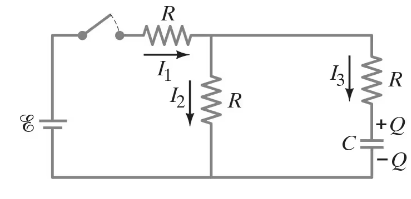The variable capacitance of an old radio tuner consists of four plates connected together placed alternately between four other plates, also connected together (Fig. 24–36). Each plate is separated from its neighbor by 1.6 mm of air. One set of plates can move so that the area of overlap of each plate varies from 2.0 cm2 to 9.0 cm2.
(a) Are these seven capacitors connected in series or in parallel?
(b) Determine the range of capacitance values.







